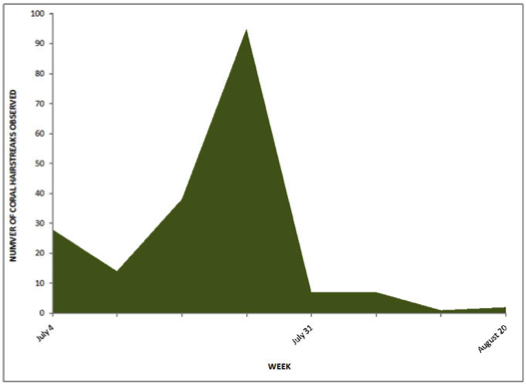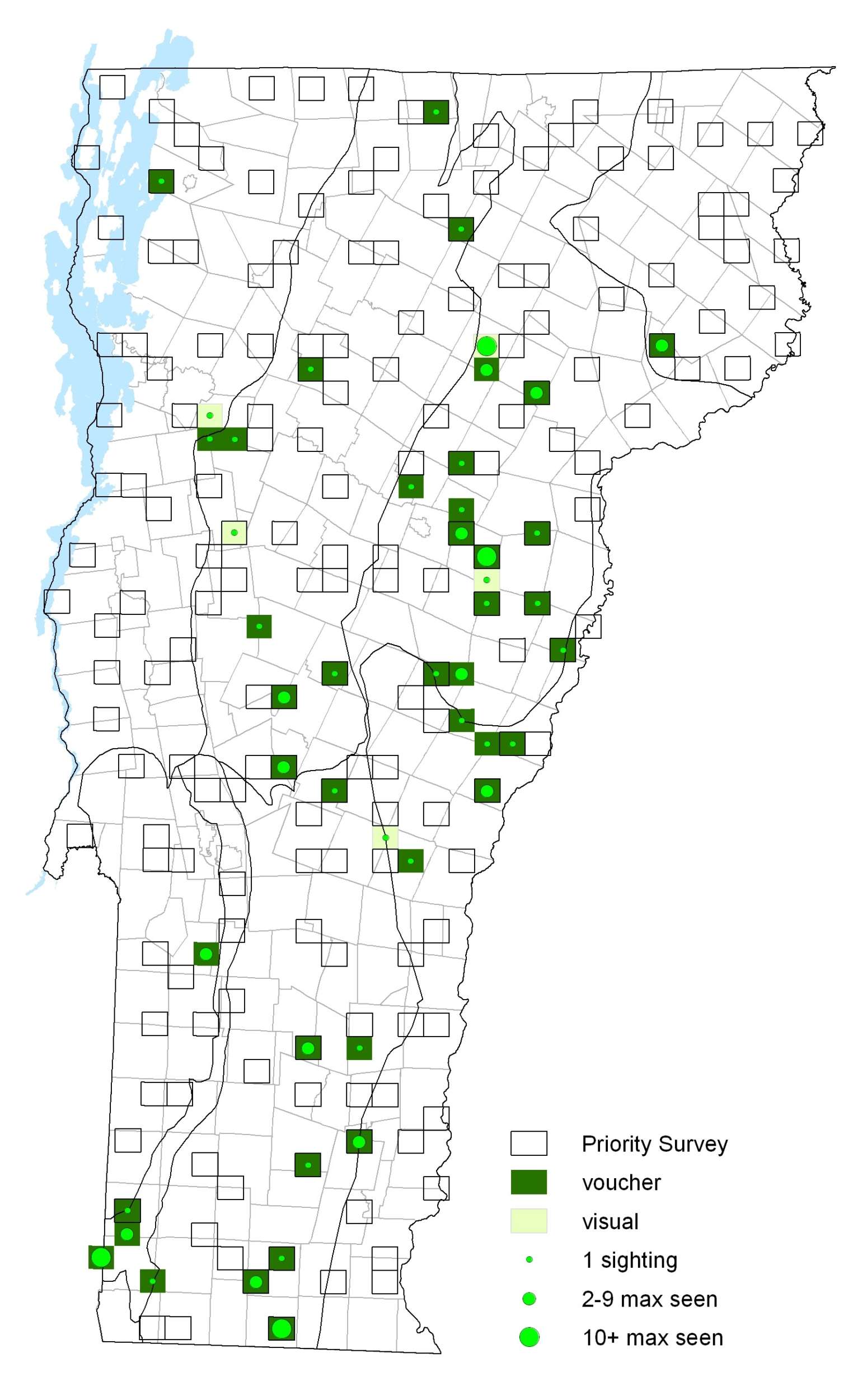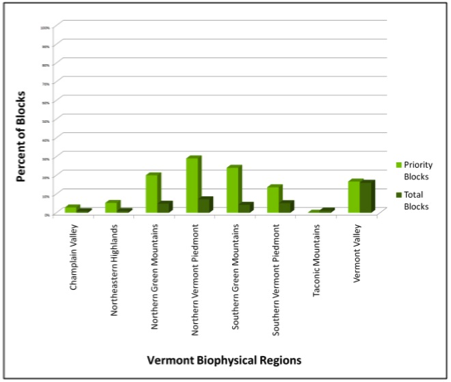|
Resident Conservation Status North American Range |
This hairstreak is unique in its genus in that it has no tails. Males can be extremely aggressive when perched and watching for females and will often confront and chase rival males as well as other insects. Females lay eggs singly on host twigs or in leaf litter at the base of their host plant. They overwinter as eggs. Caterpillars hide in leaf litter during the day and emerge at night to feed on leaves and fruit. Ants that feed on honeydew excreted by the larvae diligently attend them.
Identification
No tails. Upperside dark brown. Underside of hindwing light brown with row of coral spots at margin, and postmedian row of black spots ringed with white.
Flight
One brood, flying from beginning of July to late August with a peak mid to late July. Extreme dates: 30 June 2003 in Norwich (C. Rimmer) and 20 August 2002 in Hardwick (J. Schneider).
Distribution and Habitat
Few records were reported from the Champlain Valley during VBS. Most abundant in the Vermont Piedmont and Green Mountains regions.
Coral Hairstreak prefers weedy, open habitats in close proximity to favored nectar sources such as milkweed (Asclepias), dogbane (Apocynum), and New Jersey Tea (Ceanothus americanus). Hostplants in the Northeast are cherry (Prunus).








